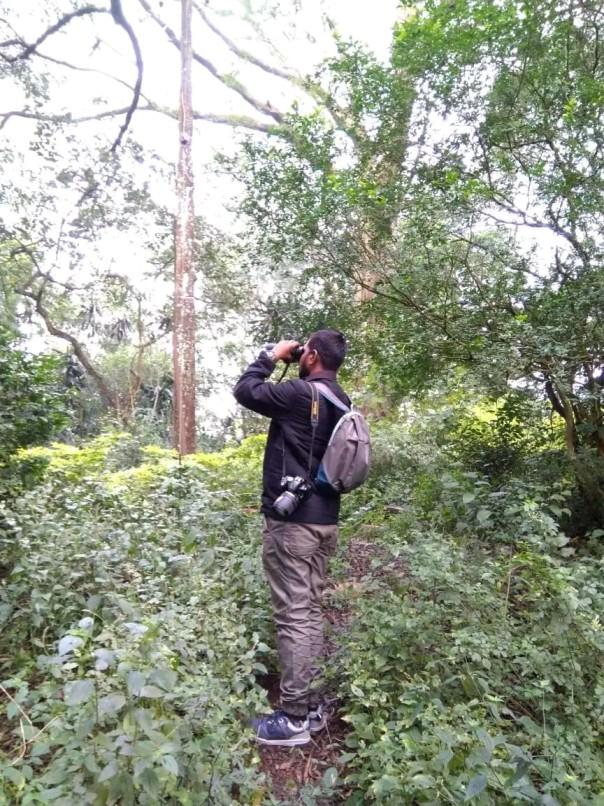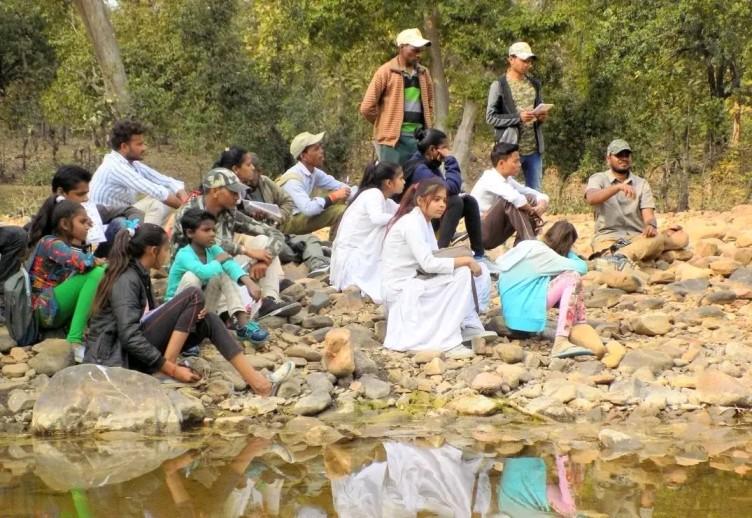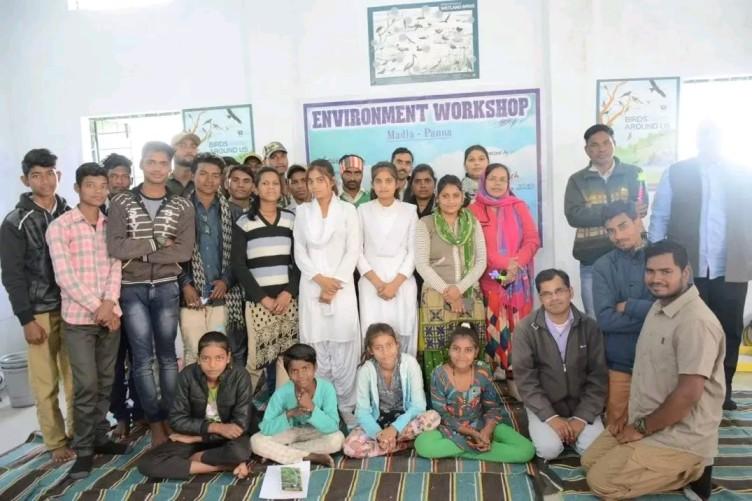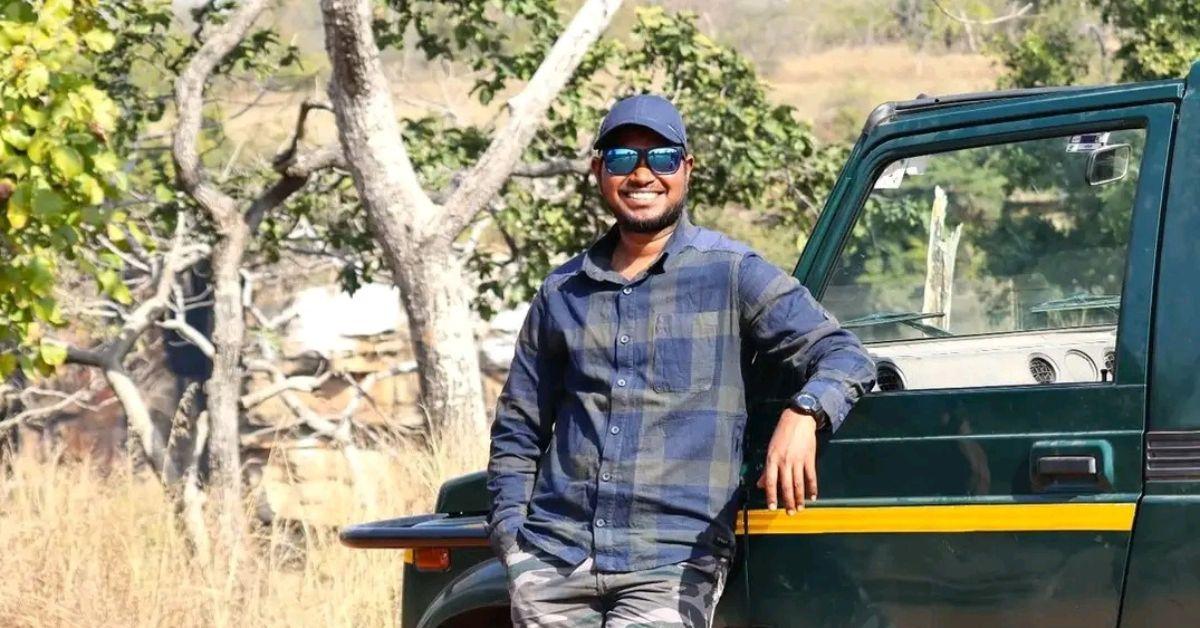Meet an Educator is a monthly series by Early Bird, where we feature the work of educators across India who are actively spreading the joy of birds and nature. This month’s featured educator is Deepak Ahirwar, a nature educator from the Panna district of Madhya Pradesh.
Tell us about yourself, where you are from and about your work
I belong to a small village Madla situated in Panna District of Madhya Pradesh. Before now, it was known for its temples and diamonds, but in the last few years Panna has been identified with the forests and animals found here, especially tigers. In recent years, tourists mainly visit Panna Tiger Reserve to enjoy its wildlife. I completed my early studies in my village Madla, after which I graduated from Panna. In my final year, I joined an NGO called ‘Samavesh’, where I learned many other things during my work. At present, I do environment-related activities with children and when I have the time, I organise small programs like bird walk, nature walks and so on.
Are you a birdwatcher? What about birdwatching excites you?
I am not a regular birder, but I go out with my camera and binoculars to meet the birds. I have a different feeling of peace with nature, and whenever I go to the banks of the river or in the fields, I hear a variety of sounds. Ever since I started listening to these sounds, I have come to know more. Different types of birds make their nests in and many types of birds are seen around the house. I enjoy learning about birds and capturing them on my camera. From the experience of my past years, I can say that wherever I live in future, I will be connected to nature and living beings.

When and how did you get interested in bird / nature education?
To be honest, my childhood has been spent in the jungles. The river, the mountains and the forest are everything in my village, despite being so close to the forests and wild animals since childhood, I did not know them. Perhaps the reason for this was that I never had the chance to learn about them. I remember, once school students were invited for a jungle safari by the Forest Department, I went along. The Field Director at the time, Mr. Rangaiah Srinivasa Murthy, shared in detail about the small to big creatures living in the forest. He told us about the forest as ‘our forest’, like this, I got to know a little about the jungle and my interest in it began to grow. Since then, I have constantly tried to stay connected with nature.
I have been doing bird walks continuously for the last 5 years, and trying to learn about birds. Whenever I get the chance, I go on a bird walk with the kids to connect my children with birding.
What do you hope to achieve through your education work?
Through my nature education work, I hope that children or the community are especially motivated to connect with nature and contribute to its conservation. I agree that sometimes people are aware of simple things, they just need to attract attention. If we can do this in fun and exciting ways, then surely people will be aware of their role.

Why do you believe it is important for children to learn about birds or connect with nature?
I believe that children as well as communities, public representatives and others need to connect with nature. Only after knowing and learning about nature or birds will people be able to think about their sympathy or conservation towards other living beings and habitats.
What tools or resources have helped you in teaching about birds?
In the beginning, when I started learning about birds, we had very few resources, but since we are associated with NCF, Early Bird and other organisations we have many types of resources to teach children. I use a variety of games, posters, flashcards, field guides and booklets when engaging with kids about nature and birds. I often face a certain type of problem in resources, which is the regional language barrier. Most of the resources we have are in English, but where I work there is a need for resources in Hindi. I find that if we work with children in their local language from the start, they participate more actively and with keener interest.
Have you encountered a significant challenge as a bird / nature educator?
The challenge I face during my work is language. Most of the resources available with us are in English which we have to present with the children in Hindi first and then in the local language, that is Bundelkhandi. We are working to address this challenge by creating primary materials for working with children in their local language.

Do share any memorable moment or experience you have had in teaching children about birds / nature?
Once I took the children of a private school on a bird walk, and we saw many types of birds. The teacher saw a rock pigeon on a tree and she told the children, saying “Look children, there is a crow sitting on the tree.” I also looked with very curious eyes, where is it sitting? When I realised it was a rock pigeon, I told the children and the teacher responded saying “No, we have seen that pigeons are white”. I explained the difference by showing photos of both the crow and the pigeon to their teacher. Actually, the child and the teacher belong to the city and they never had the chance to get to know forest or birds in this manner.
Have you noticed any changes in your learners after they received exposure to birds and nature-based learning?
Oh yes! I have seen a lot of changes in kids. They often come to me asking about the size of birds, the habits of the birds they see around them like – when do they nest? When do they eggs? Which birds threaten them? They have begun to notice the small things, which truly matter. I feel very happy when they come to me with their questions.
What message would you have for your fellow educators, or anybody starting out on their bird education journey?
According to me, start with a small group, do small games, organize interesting activities and then try to find out which kids are taking more interest and what their needs are. Every child’s learning level is different, try to differentiate between groups and adapt your engagement accordingly which will make it more engaging and helpful for learning.

